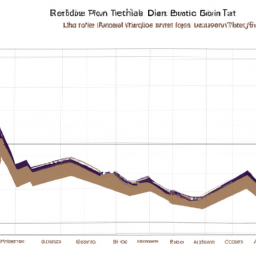A bond is a debt instrument issued by a borrower, whether it be a government or corporation, to raise funds. Essentially, a bond is a loan from an investor to the borrower. The investor receives interest payments from the borrower, and the bond's value may increase or decrease depending on various economic factors.
Bonds are known as fixed-income securities because they provide a fixed rate of interest to investors. This makes them a popular choice for those seeking a stable source of income. The interest rate paid on a bond is known as the coupon rate, and it is typically paid out semi-annually.
There are various types of bonds available, including government bonds, corporate bonds, and municipal bonds. Government bonds are issued by national governments, while corporate bonds are issued by companies. Municipal bonds are issued by local governments and are used to fund infrastructure projects.
One important factor to consider when investing in bonds is credit rating. Bonds are rated by credit rating agencies, which evaluate the borrower's ability to pay back the loan. Bonds with higher credit ratings are considered to be less risky and typically offer lower interest rates. On the other hand, bonds with lower credit ratings are considered to be riskier investments and offer higher interest rates.
Junk bonds, also known as high-yield bonds, are bonds that are rated below investment grade by credit rating agencies. These bonds are considered to be riskier investments, as the borrower is more likely to default on the loan. Junk bonds offer higher interest rates to compensate for the increased risk.
Another important factor to consider when investing in bonds is the term of the bond. Bonds can have varying maturity dates, ranging from a few months to several decades. Longer-term bonds typically offer higher interest rates, but they are also more sensitive to changes in interest rates and inflation.
One signal of a future economic downturn is a yield curve inversion. This occurs when shorter-term government bonds have higher yields than long-term bonds. This phenomenon suggests that investors are anticipating lower interest rates in the future, which could be a result of a slowing economy.
Bonds can also be used as a tool for diversifying an investment portfolio. By investing in bonds, individuals can mitigate investment risk by spreading their money across multiple asset classes. Bonds are also a popular choice for those seeking a stable source of income during retirement.
However, bonds do come with some risk. Like all investments, the value of bonds can fluctuate based on economic factors such as inflation and interest rates. Additionally, if the borrower defaults on the loan, investors may lose some or all of their investment.
In times of economic uncertainty, a liquidity trap can occur. This is when consumers and investors hoard cash and refuse to spend, even when economic policymakers cut interest rates to stimulate spending. In this scenario, bonds may be a safer investment option than stocks, as they offer a fixed income with less volatility.
In summary, bonds are an important component of the economy and offer investors a stable source of income. Understanding the basics of bonds, including credit ratings, term, and risk, is essential for making informed investment decisions. By diversifying their portfolios with bonds, individuals can mitigate investment risk and potentially earn a steady stream of income.
